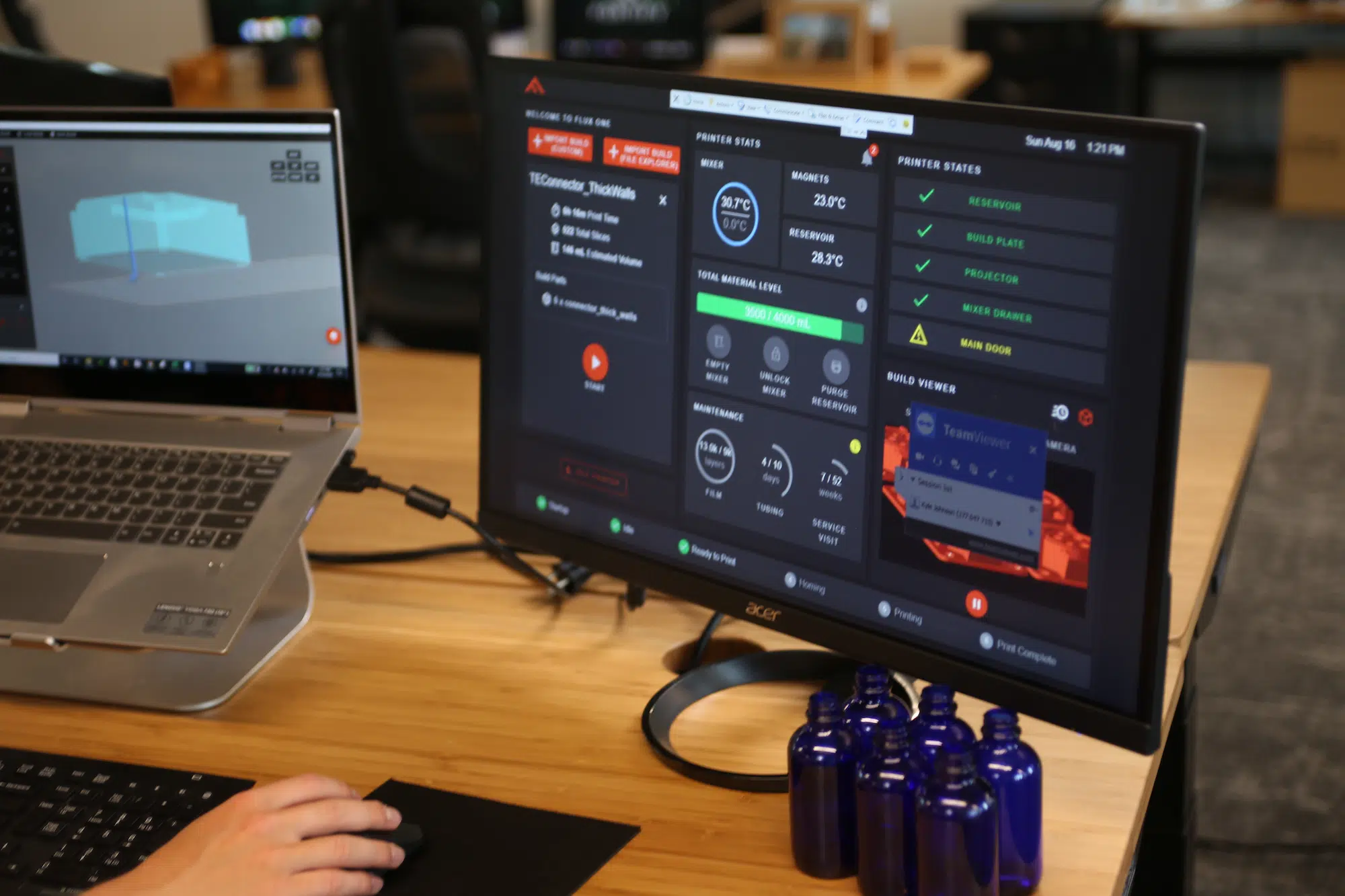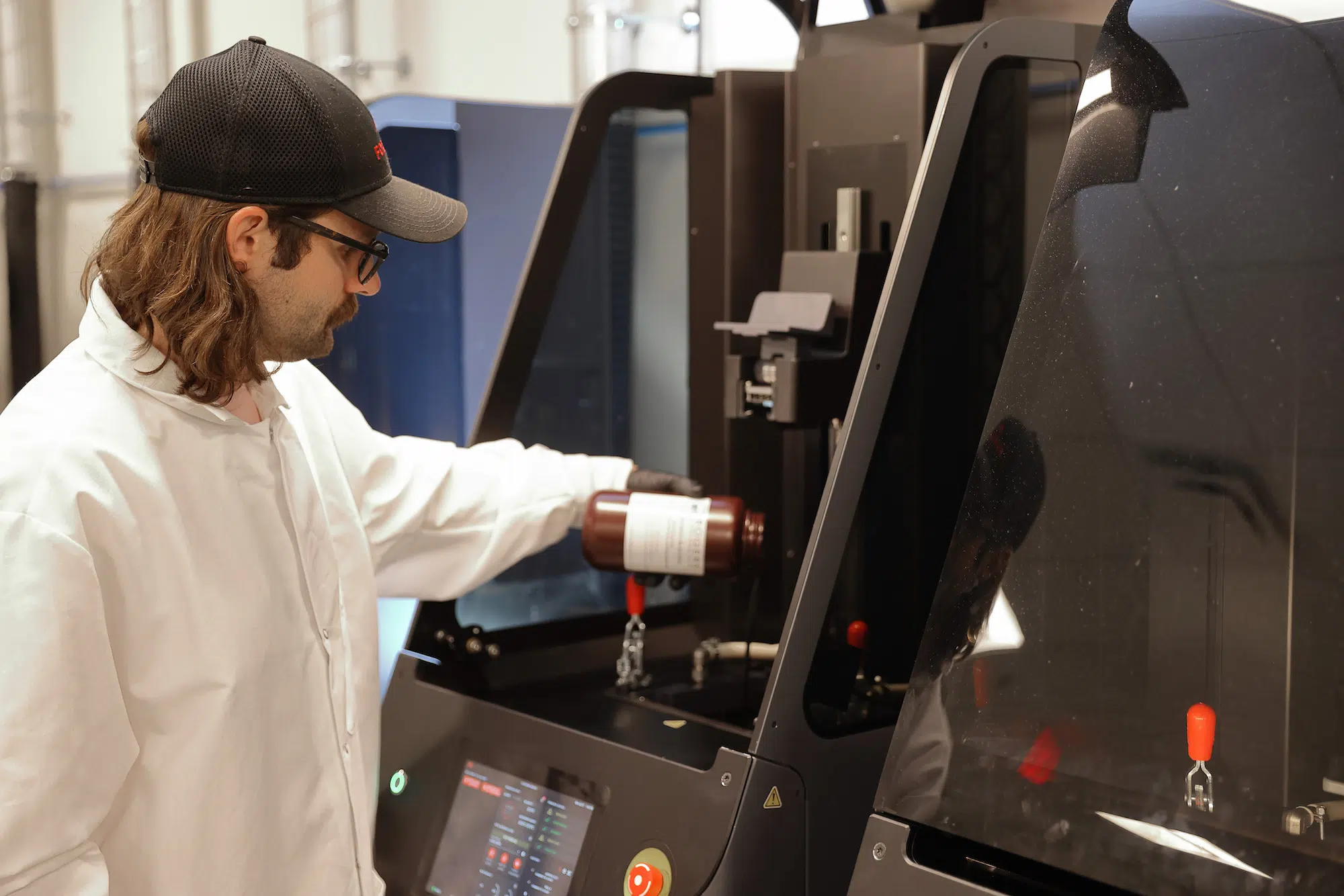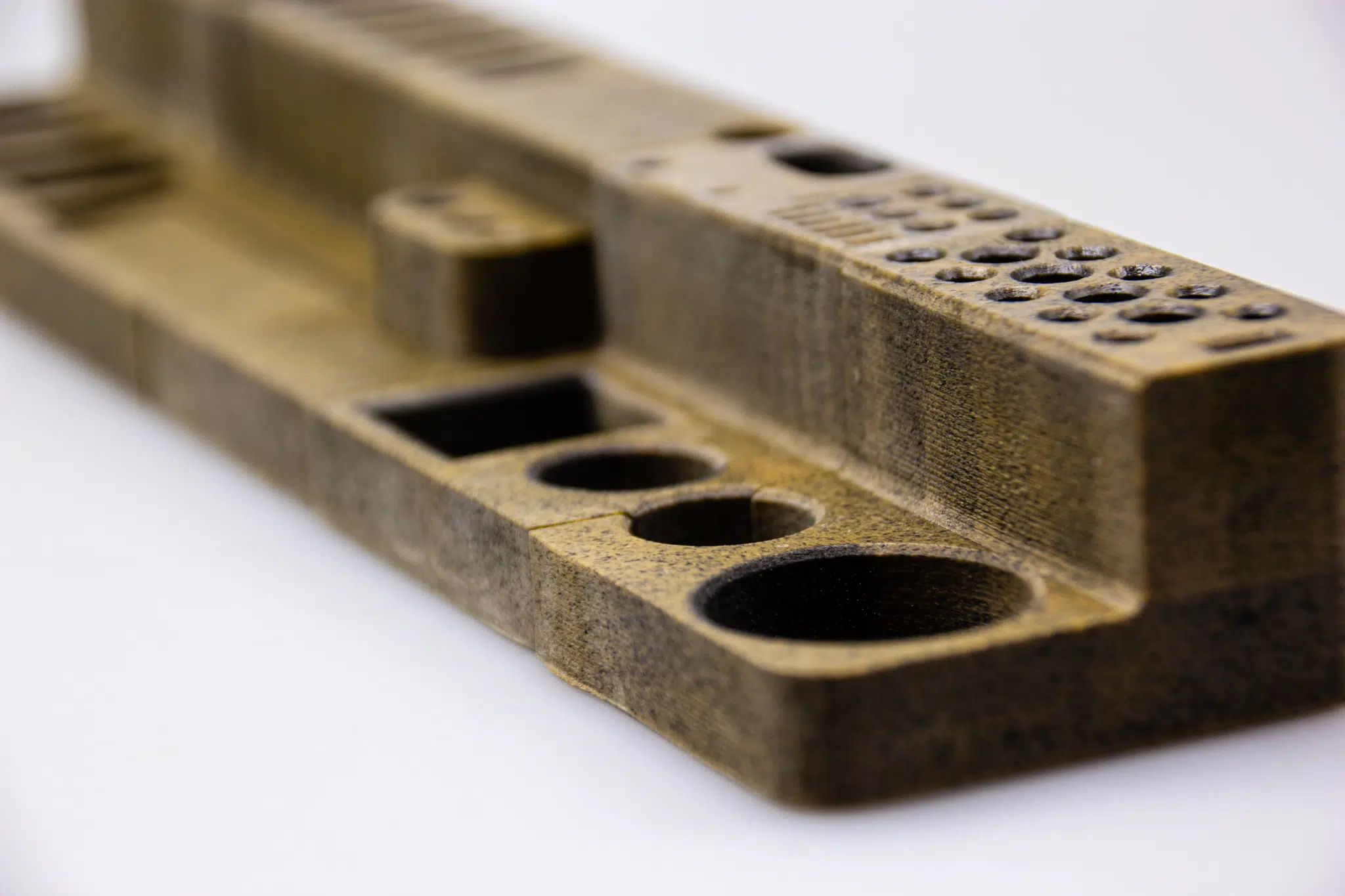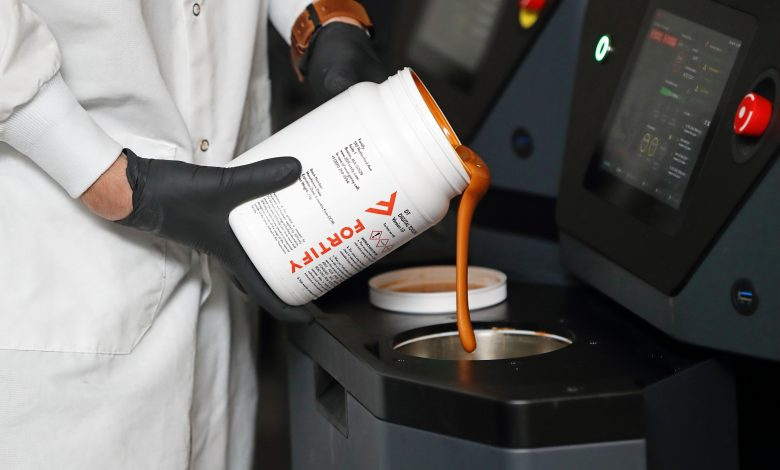We’ve had a keen interest in Boston-based company Fortify since it was named a winner of Formnext’s 2018 Start-up Challenge. And for good reason. The company, which in 2021 raised $20 million in a Series B funding round, has pioneered a magnetic DLP 3D printing process for producing high-quality composite parts. The patented process, known as Digital Composite Manufacturing, is at the center of Fortify’s broader offering, which also includes filled photopolymers and a new software solution, Flux Developer, which gives users the tools, experiments, and workflows to develop and qualify filled resins for a variety of applications.
With Flux Developer, Fortify is empowering its clients to use new high-performance materials with its Flux Series 3D printers such as RadixTM low-loss dielectric photopolymers, high purity alumina, low shrink aluminum silicate and ESD High-Temperature resin.
Fortify’s Digital Composite Manufacturing
Before we dive into the innovative Flux Developer platform, it’s essential to first understand Fortify’s 3D printing technology and what sets it apart from other resin-based processes on the market. In the simplest terms, Digital Composite Manufacturing (DCM) is an AM process that combines digital light processing (DLP) with magnetics to create composite parts with optimized material performance. More specifically, the technology uses magnetics to align reinforcing fibers (functional additives) in a resin matrix to enhance the material properties of the original photopolymer.
The DCM process achieves this using two key technologies: Continuous Kinetic MixingTM (CKM) and FluxprintTM. The former consists of hardware integrated into Fortify’s 3D printing systems that continuously heats and mixes resin with functional additives ensuring that the material in the print reservoir has uniform distribution and suspension of fibers. In other words, CKM prevents any sedimentation and ensures filler homogeneity throughout the entire part. CKM allows for printing materials with viscosities 100 times more viscous than conventional photopolymers. With Fluxprint, a magnetic field is applied to every layer of the print to align the fibers in a specific orientation. The layer is then selectively cured using UV light, which locks the exposed fibers in place. This process is repeated, with users able to control the fiber orientation of every single fiber layer.

Fortify has brought its DCM technology to market through its Flux Series 3D printers. Today, the series consists of three models: Flux Core, Flux One and Flux 3D. All three systems feature the same build volume and resolution; where they differ is in their use of Fortify’s Fluxprint technology. As the most basic system, the Flux Core does not integrate fiber alignment; the Flux One enables Z-direction alignment for isotropic material properties; and the Flux 3D allows for full fiber alignment control. All three systems are also based on an open materials platform, meaning that users have the freedom to develop new materials to unlock new properties and applications.
Advanced material development with Flux Developer
When it comes to developing new materials for AM processes, it is not the material creation itself that is the greatest challenge. Rather, it is qualifying the material for existing hardware and software: finding the right print settings and parameters to achieve the best material properties.
Flux Developer software is the key to developing and printing viscous and fiber-filled photopolymers for Fortify’s 3D printing technology. With it, the company has essentially refined and commercialized its own internal material development and qualification process, laying the foundation for its customers to pursue their own material R&D and reach new levels of performance using DLP-based technology.
In its current iteration—Fortify specifies that it will be continually upgrading the software with new features—Flux Developer gives engineers access to over 30 print parameters, which control various elements of its 3D printing solution, including the light engine, the CKM process and Fluxprint technology. The material qualification solution is made up of four elements: Flux Portal, a browser-based application for creating and sharing materials configurations; Flux Host, the on-machine user interface which houses materials on-boarding experiments; Compass, Fortify’s build preparation software; and Off-Machine Experiments, which includes support and recommendations from Fortify.
Flux Developer’s workflow is fairly intuitive. The user begins with a material formulation or a goal for specific material properties. From there, they can use Flux Host to conduct on-machine experiments, including photokinetics analysis, build plate adhesion, sedimentation rate analysis and rheology tests.
Manufacturing on Demand

Experimentation is an essential part of material development and qualification. For example, Fortify has developed automated experiments that are focused on understanding the rheology (resin flow) of a given material, taking into account the material’s own composition (i.e. resin viscosity and fiber content) as well as the process (i.e. the temperature of the resin and the shear rate). Furthermore, Fortify provides analysis tools, such as sedimentation rate analysis which allow users to quickly configure various parameters in Fluxprint.
Fortify has also developed automated DOE (design of experiment) tools to understand settings like build plate adhesion and curing. For example, users can employ an experiments to evaluate the depth of cure and scatter behaviors of a fiber-filled material under certain settings all in a single print. In this experiment, the 3D printer prints 24 samples using different combinations of UV energy intensity and doses to find the best combination. Fortify is also working to expand its roster of experiments to improve print settings for fiber-filled resins.
Once these experiments have been completed, the user moves onto the Flux Portal where they can create material profiles and specify parameters. In the Flux Portal, the user can set many different parameters, including UV exposure intensity and dose; plunge speed and acceleration; peel height, speed and acceleration; and wipe frequency and speed. All these elements of the DLP-based printing process will influence how a material reacts and ultimately performs.
In addition to storing material profiles, Flux Portal also provides vital information to the user like past configurations and changes made, as well as print status, history and analytics for all on-machine experiments. This data is essential, allowing users to easily track the success of print parameter experiments—or find where failures occurred.
Fortify expands portfolio with ESD-HT Resin
But what kinds of materials is it possible to qualify using the Flux Developer platform? While users can choose to test and characterize neat resins, the real value of Fortify’s AM solution is in filled photopolymers, with enhanced material and mechanical properties. One material the company has recently brought to market, which exemplifies its technology’s capabilities, is ESD-HT Resin, a static-dissipative, high-temperature photoresin.

ESD-HT Resin was developed using the Flux Developer platform and is compatible with Fortify’s Flux Series 3D printers. Using Flux Developer enabled Fortify to accelerate the material’s time to market significantly. Furthermore, the company’s CKM technology has proven vital to ensuring the best performance is achieved for printed parts. As it explains: “An even dispersion [of functional additives] is critical to ensure that ESD-safe parts have consistent resistivities throughout.”
The material itself has been engineered to prevent the buildup of static charge in 3D printed parts, reducing the risk of fire hazards and increasing the durability of sensitive electrical components. The HT designation also means the resin is effective at static dissipation (with resistivities of up to 106 Ω/sq) at temperatures reaching up to 284 degrees Celsius, making it suitable for a broad range of applications in industries that require electrostatic-free environments, as well as those with fire and explosion risks.
More specifically, the advanced photoresin can be used to print parts to improve explosion and fire prevention in automotive painting facilities, flour processing plants, oil refineries, gas stations and more. Additionally, the material’s ESD-safe properties are helpful in the production of assembly trays, wave solder pallets and printed circuit board racks in electronics manufacturing. ESD-HT can also be used to minimize the contamination risk from electrostatics like dust or bioparticles in clean environments like hospitals, food handling facilities, automotive interiors and air pumps.
This high-performance material unlocks a wealth of new applications for Fortify’s DCM 3D printing. With the Flux Developer platform, new filled photoresins—with specific parameters and benefits—can be developed and qualified more efficiently, leading to even more application possibilities as well as enhancing existing AM applications.
This article was published in collaboration with Fortify.
* This article is reprinted from 3D Printing Media Network. If you are involved in infringement, please contact us to delete it.
Author: Tess Boissonneault



Leave A Comment